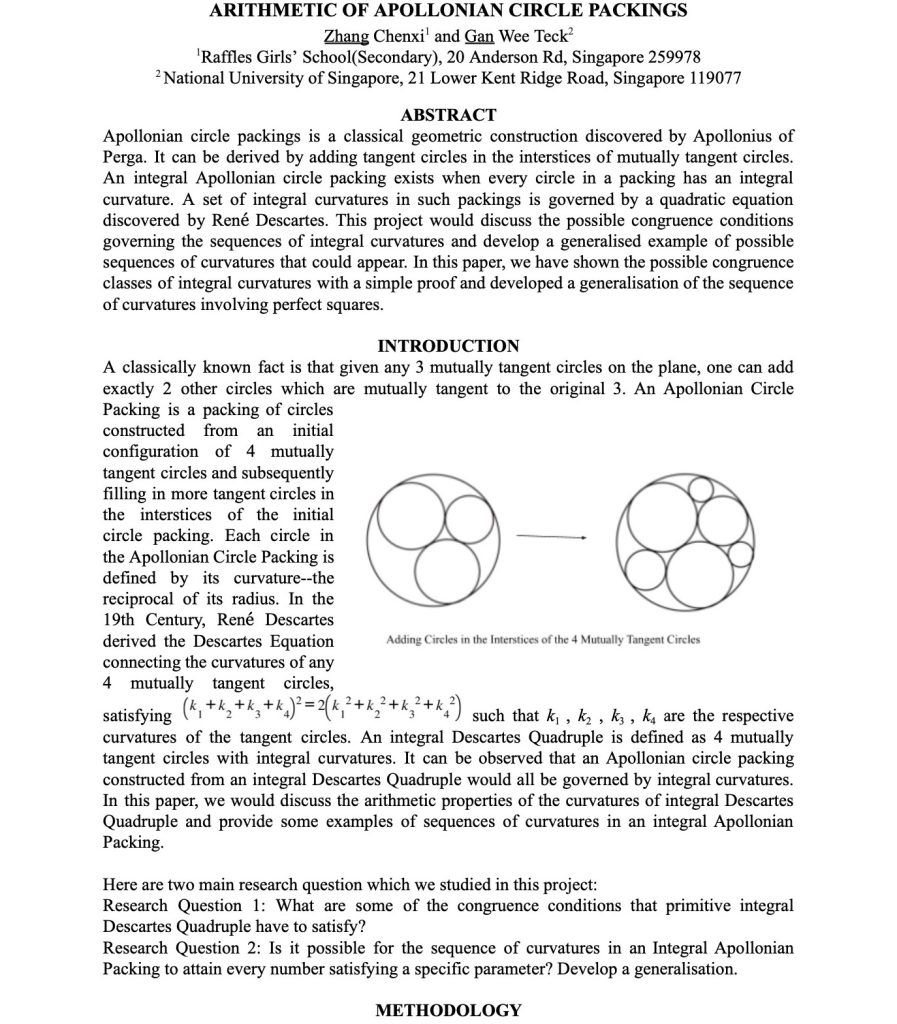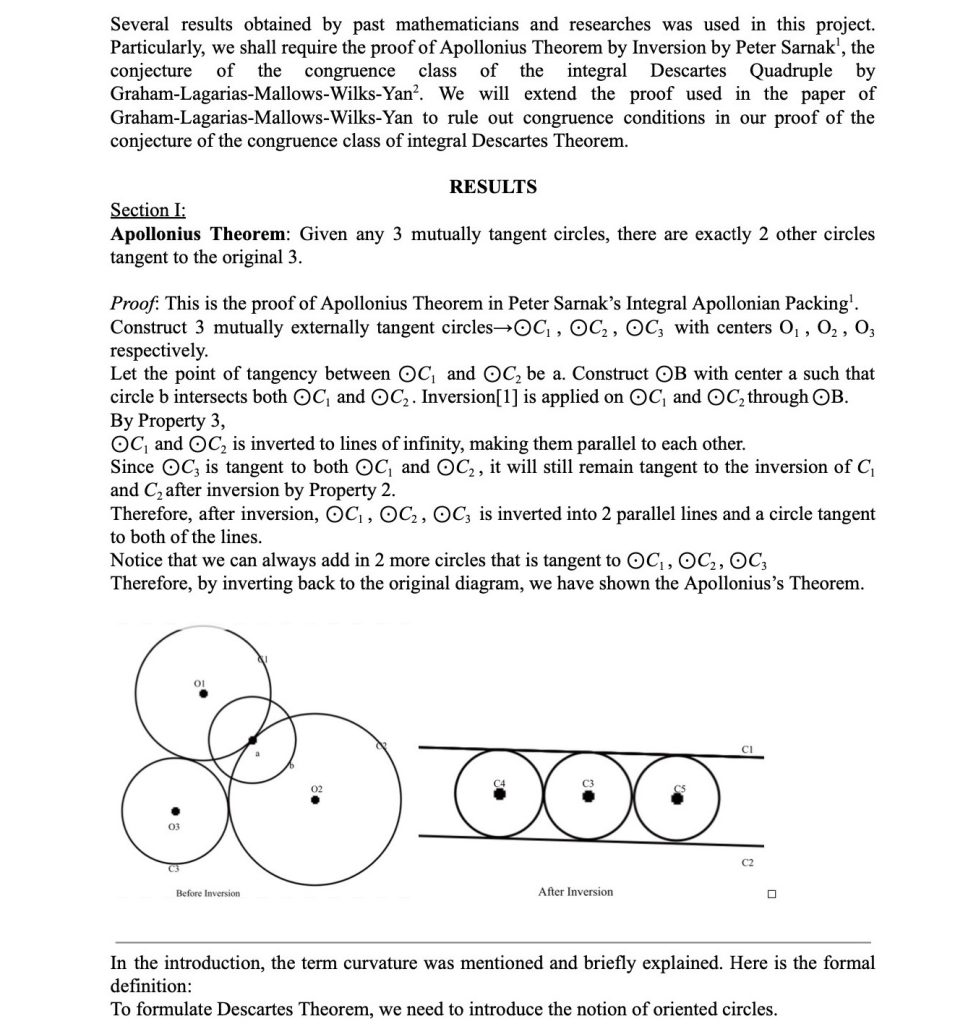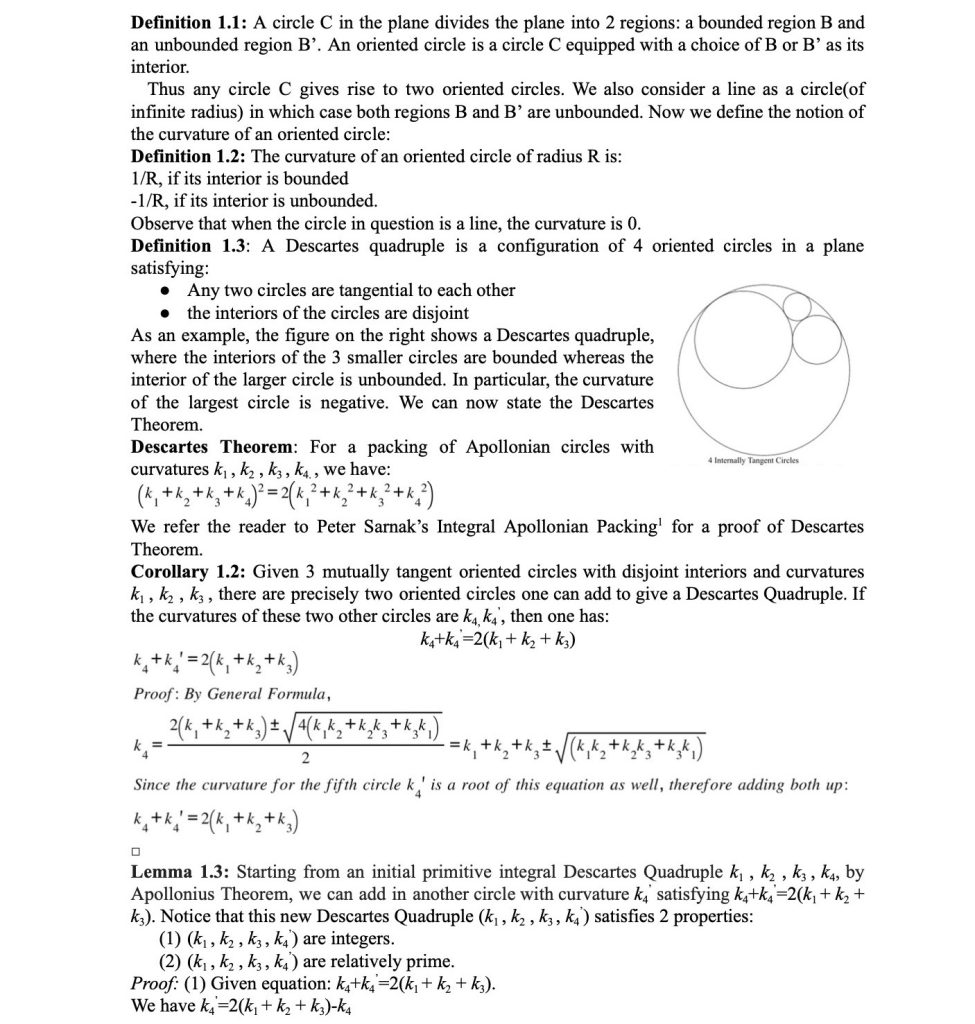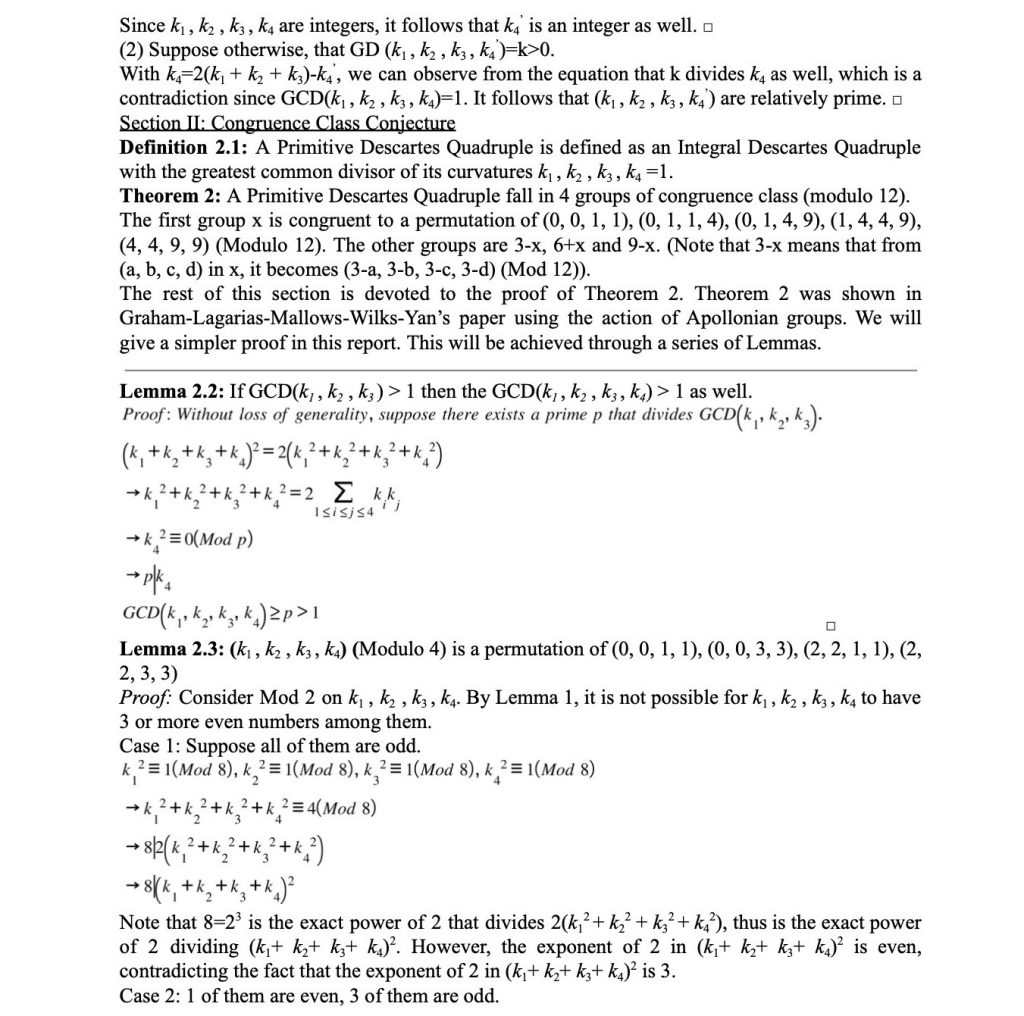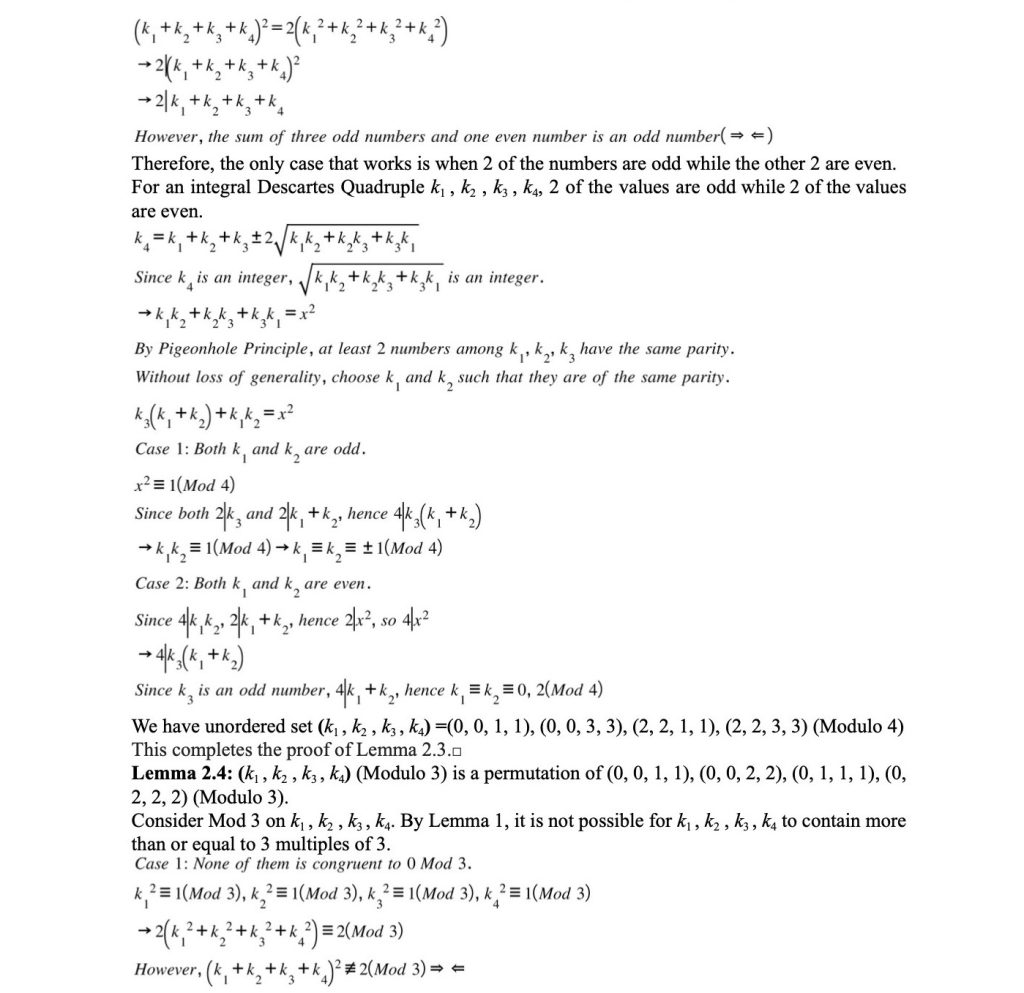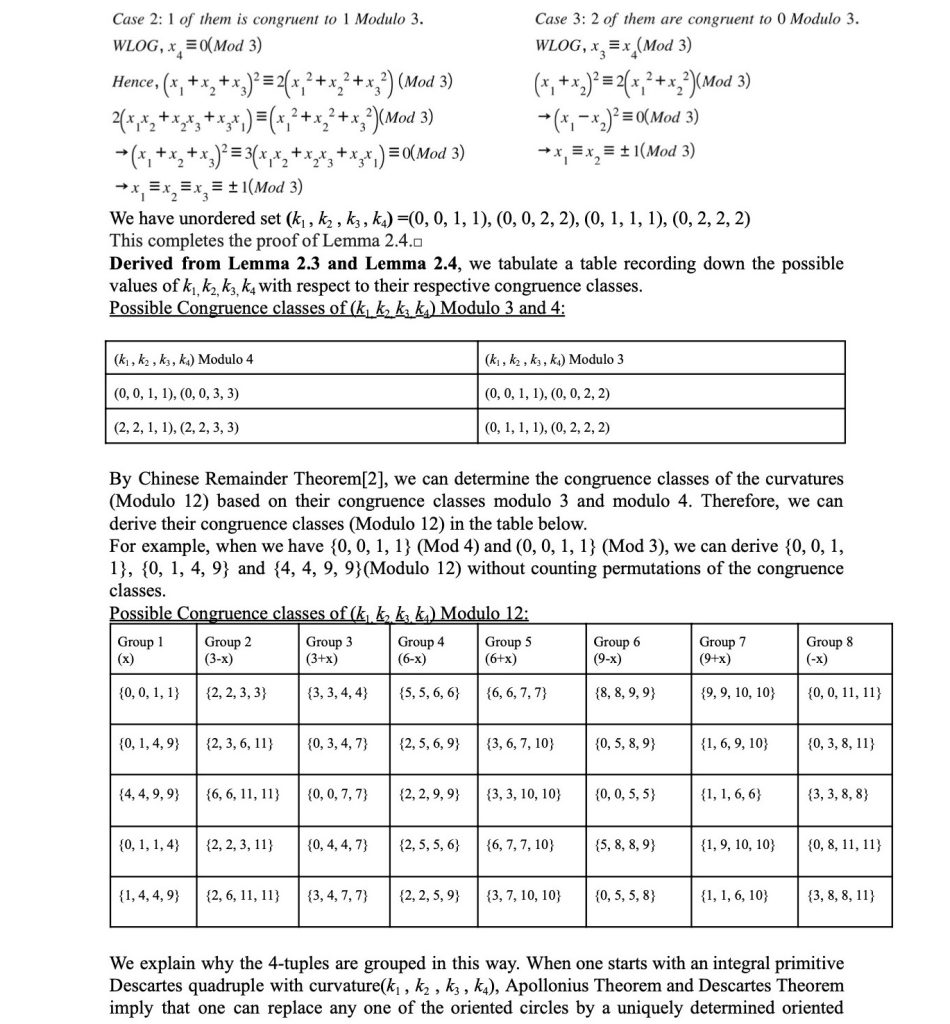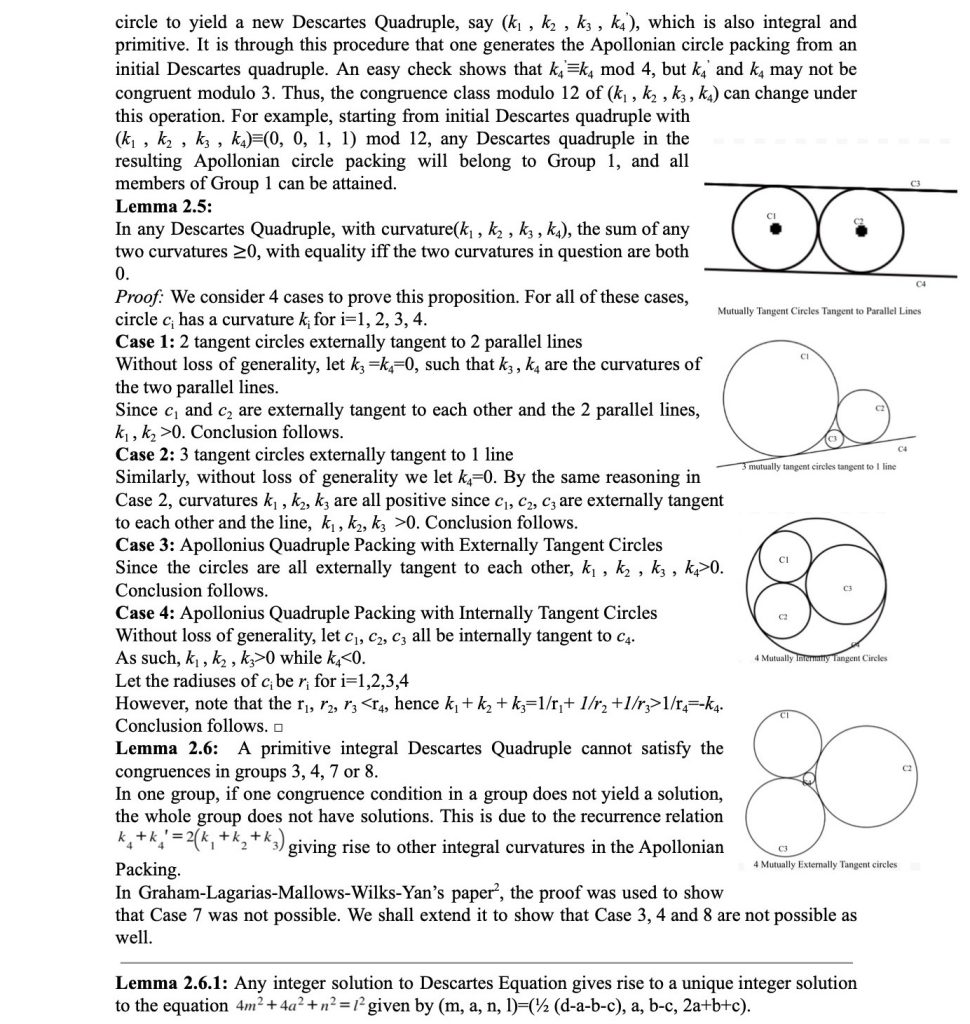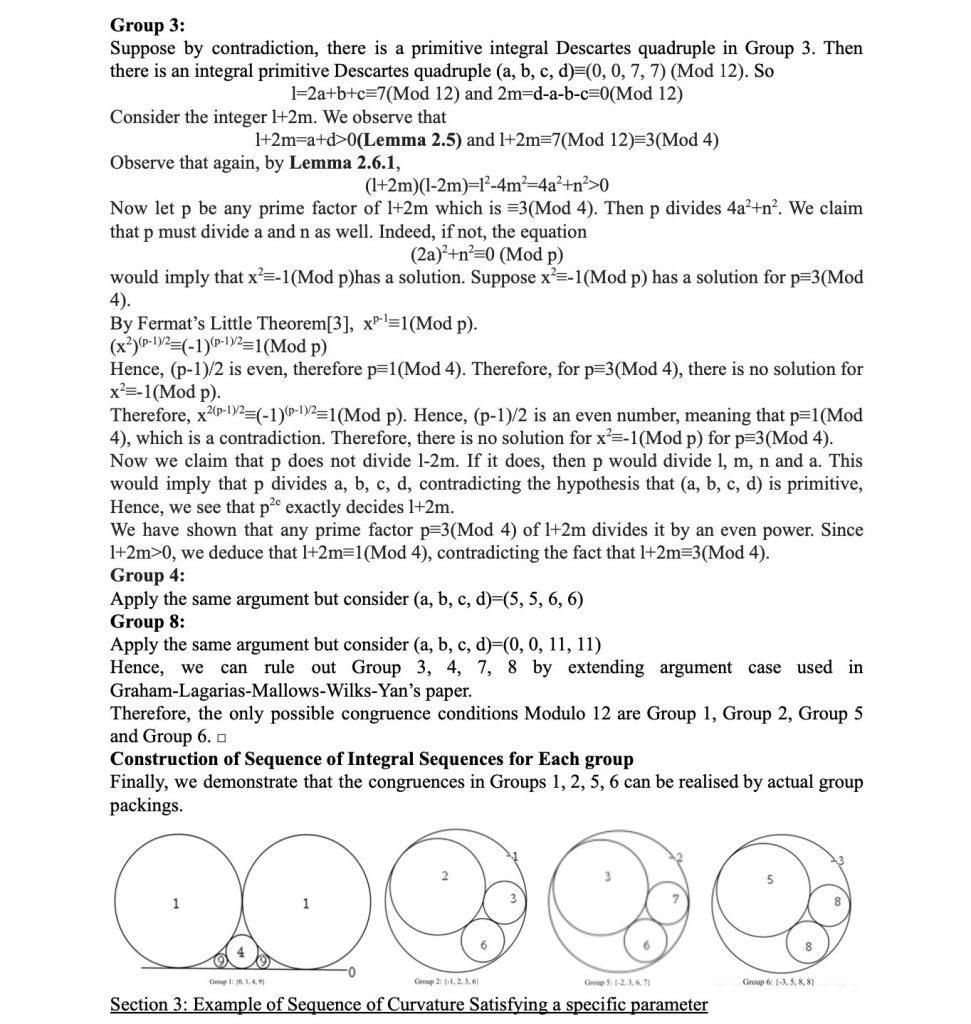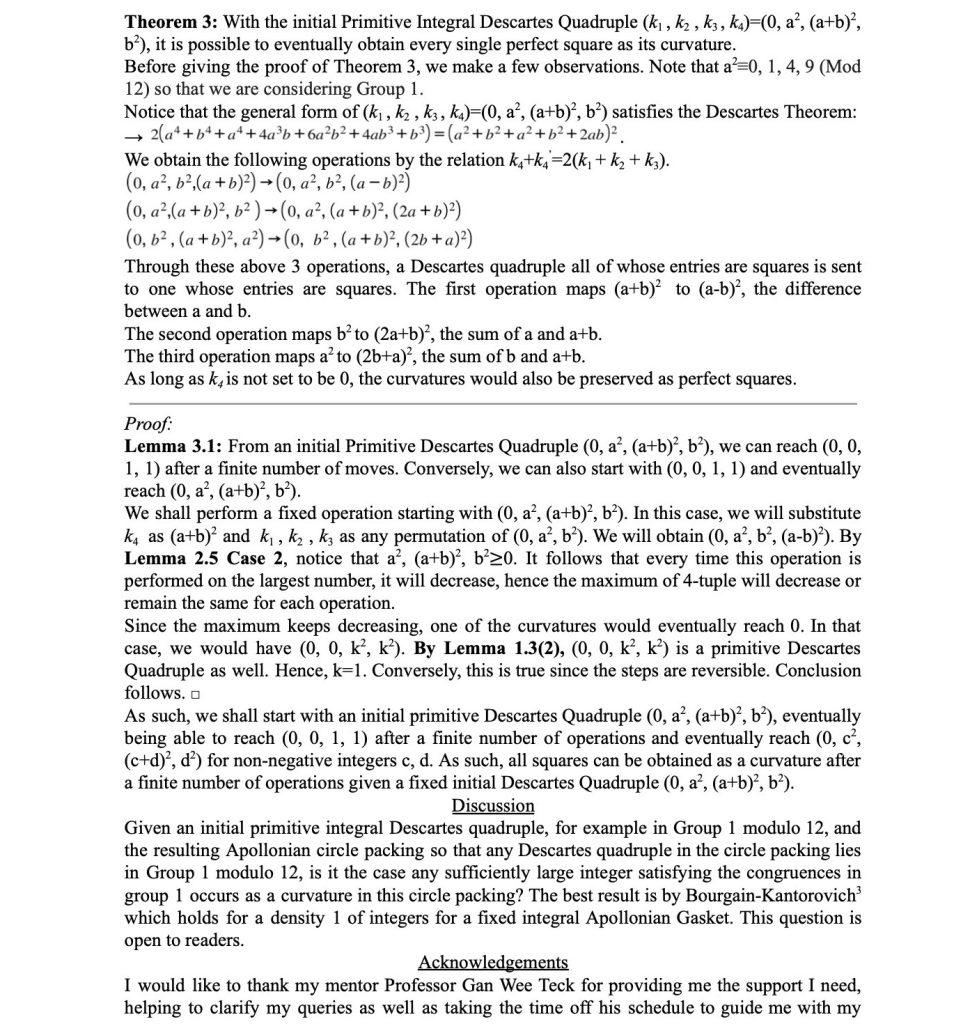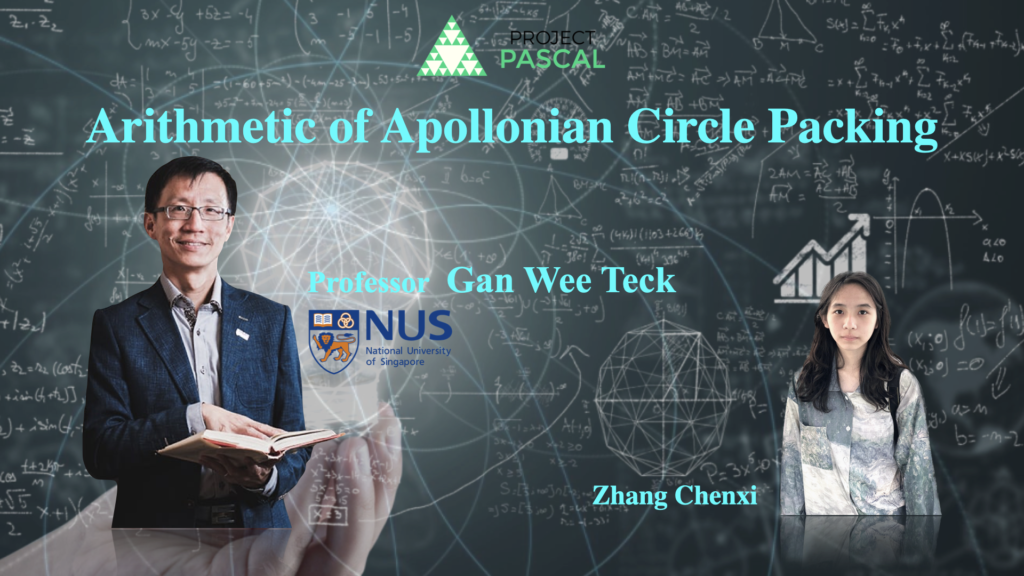
Arithmetic of Apollonian Circle Packing : By Zhang Chenxi
Introduction
My report titled ‘Arithmetic of Apollonian Circle Packing’ explored the congruence conditions governing the integral curvatures of the circles in a geometric configuration known as the Apollonian circle packing. The relations of a set of integral curvatures is governed by a quadratic equation called the Descartes Theorem. My report presented the possible congruence classes of integral curvatures that can appear in such a packing, as well as a generalisation of recursively develop the curvatures of circles in a packing of a higher order.
- What sparked you, whilst doing your literature review, to embark on a project with such a theme?
I had a strong interest in geometric configurations, so having my research project revolve around a lesser-known geometric configurations well aligns with my interests, as well as allowing me to uncover deeper insights about the specific topic. It is really a niche topic, as the existing literature review is scarce with a notable conjectures on this field by the authors Graham-Lagarias-Mallows-Wilks-Yan who wrote a combined paper elucidating the number theory behind the curvatures of the circles in such a packing. Whilst I am sure that their insights are far more developed and deeper, my paper presented some of the observations and patterns observed in a more palatable format, using conventionally known number theory theorems like Fermat Little Theorem or Chinese Remainder Theorem to substantiate the lemmas we have come up with to tackle our research question. Hence, my project is more on the exploratory side, instead of having a final product in mind from the very start, which very much suited what I had been looking for in a research project, as well as allowing me to uncover more about a lesser known topic.
2. What are the main difficulties you faced whilst conducting your research?
While it must be acknowledged that existing literature review on the topic was scarce, it was also tough to come up with entirely original and applicable results. I also had to reduce the scope of my project, as it was originally intended by my Professor to be exploring the parallels between the circle packing and Conway’s Topograph, which is of higher dimension and higher order, but both are of a recursive nature. (Namely, an Apollonian Circle Packing involves inputting tangent circles in the interstices of mutually tangent circles, while the Conway’s Topograph is a geometric interpretation of the Binary Quadratic Form, which is inherently recursive.) My Professor and I had some ideas for some transformation or mapping that would transform one to the other and back, but it turned out to be unfeasible due to various reasons. Hence, we had to scale down the project and instead focus on coming up with an operation regarding the curvatures of the circles in the packing where we could obtain all the possible configurations in a group per se by repeatedly applying the operation.
3. What are your main takeaways from your research project?
Well, definitely the Math, as well as the scientific presentation. As a lot of the ideas are quite arcane, like the projective geometry aspect as well the derivation of Descartes Theorem, it took me a lot of time grappling with those and trying to understand the intuition behind it. While school doesn’t really take its time to explain the derivation of equations and chooses to focus more on the application of those equations, research is an entirely different story, as your synthesis of the existing literature review and how to take those further with your own research has to be very clear as well. I also struggled with trying to present my ideas in the format of a scientific report, as the balance between splurging on numbers and equations and explaining the intuition clearly is tenuous. However, SSEF and YSC are really good avenues provided to give me an opportunity to defend my ideas, and elucidating it in a manner that such an esoteric topic can be made more approachable to the general public.
